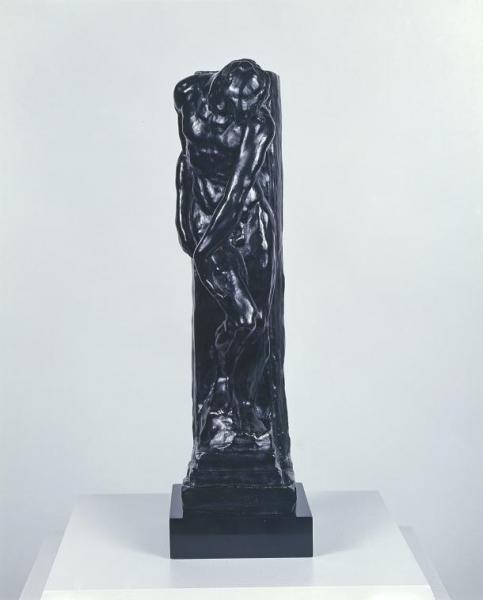
Spotlight on “Adam with Pillar”
This 16-inch tall Adam with Pillar is a wonderful example of Rodin’s interest in Michelangelo and of the french artist’s own genius with the communicative capacity of sculptural form.
In 1876 Rodin was living in Brussels, working on decorative sculpture for architecture. He traveled to Italy to study the work of Michelangelo, the only artist he ever acknowledged as being of interest to him. Perhaps that same year, after his return from Italy, Rodin created his own Adam (the figure without pillar), drawing heavily on Michelangelo’s pietas and on his paintings for the Sistine Chapel. Rodin’s Adam was set aside until a few years later when Rodin decided he wanted an Adam and an Eve to flank his Gates of Hell.
Rodin’s 1876 Adam is being created by God as we watch: he is awakening to conscious being, pulling and twisting himself out of his prior nothingness, pointing to the ground from whence he came. It is therefore no surprise that this piece was first known as The Creation of Man. The Foundation’s piece is Adam with Pillar, and is different. Unlike the monumental Adam who stands without a pillar and is vigorously modeled in the round, the Adam in the Foundation’s piece stands against a pillar, and thus has a back and a front, a front that directs where the viewer is to stand to get the view the sculptor preferred. Whereas the monumental figure’s corkscrew pose draws us around it, the pillar on our small figure stops our movement and focuses our attention on what we must assume is the optimal — most meaningful — view. What does the form of this smaller piece tell us? How does the pillar change the meaning? Because of the pillar the small Adam cannot twist out of the nothingness. The viewer cannot walk around Adam to see what has been called “his powerful back.” Thus the form leads us to read the pose differently. Perhaps Adam with Pillar does not depict the moment when Adam is created, but instead shows a moment later in Adam‘s life, perhaps — like Eve — it is after the Fall.
There is no evidence Rodin had any casts made of Adam with Pillar; however, a plaster for it existed in Rodin’s studio. Perhaps it was intended to decorate a fireplace; such sculptural decoration was not uncommon and the size of the piece is right. The Cantor Foundation’s Adam with Pillar was cast for the Musée Rodin in 1966. Currently it is on loan to the Nelson-Atkins Museum of Art in Kansas City.






No Comments